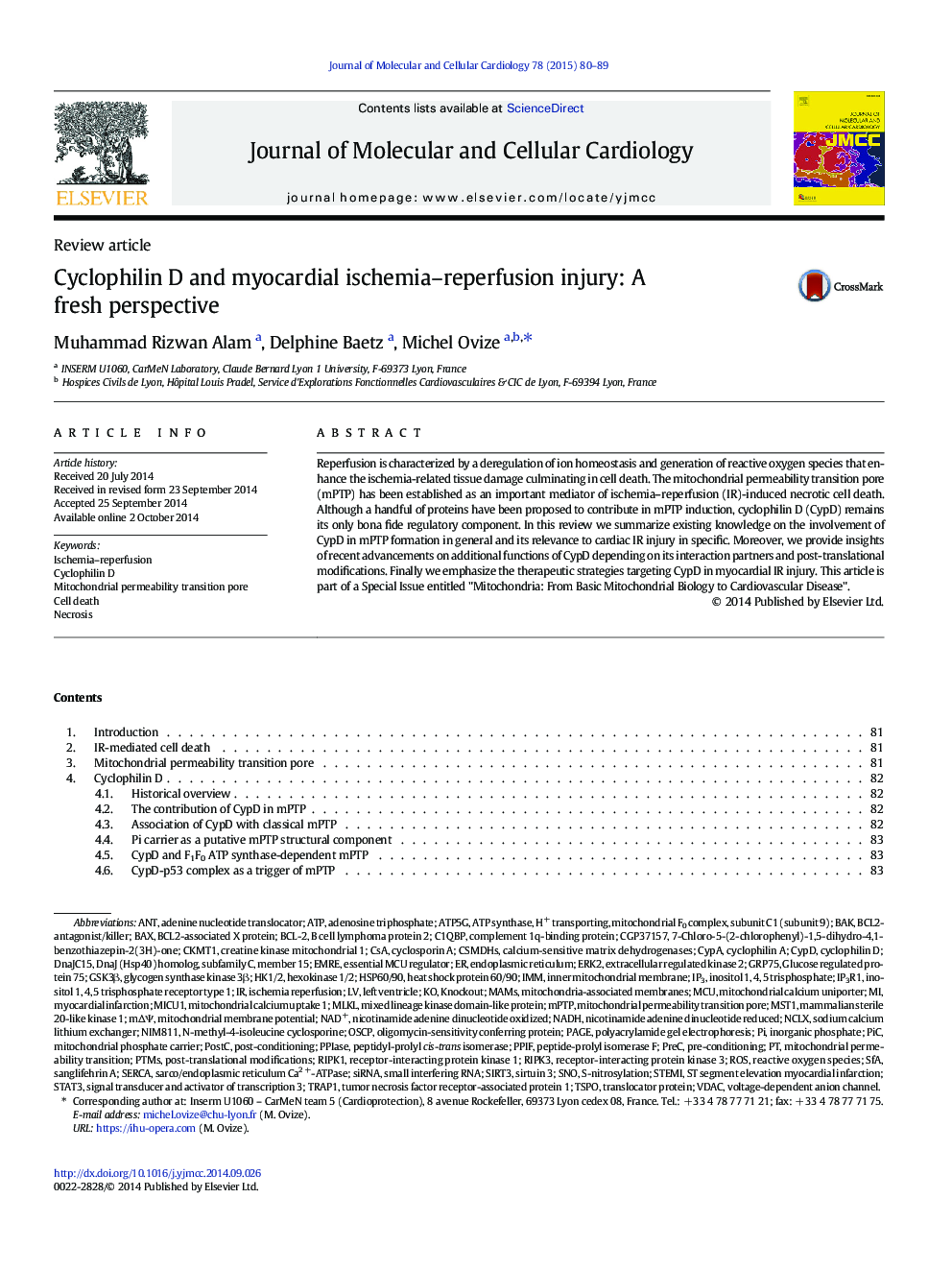| Article ID | Journal | Published Year | Pages | File Type |
|---|---|---|---|---|
| 8474510 | Journal of Molecular and Cellular Cardiology | 2015 | 10 Pages |
Abstract
Reperfusion is characterized by a deregulation of ion homeostasis and generation of reactive oxygen species that enhance the ischemia-related tissue damage culminating in cell death. The mitochondrial permeability transition pore (mPTP) has been established as an important mediator of ischemia-reperfusion (IR)-induced necrotic cell death. Although a handful of proteins have been proposed to contribute in mPTP induction, cyclophilin D (CypD) remains its only bona fide regulatory component. In this review we summarize existing knowledge on the involvement of CypD in mPTP formation in general and its relevance to cardiac IR injury in specific. Moreover, we provide insights of recent advancements on additional functions of CypD depending on its interaction partners and post-translational modifications. Finally we emphasize the therapeutic strategies targeting CypD in myocardial IR injury. This article is part of a Special Issue entitled "Mitochondria: From Basic Mitochondrial Biology to Cardiovascular Disease".
Keywords
Ripk1OSCPPAGEIP3R1IP3CGP37157Cyclophilin DMPTPPPIaseCypARipk3SFASirt3GSK3βSTEMIERK2SNOVDACMST1TSPOCyclophilin AS-nitrosylationSTAT3Glucose regulated protein 75Sanglifehrin AppifNCLXNIM811TRAP1MICU1sarco/endoplasmic reticulum Ca2 +-ATPasegrp75MLKLSirtuin 3Peptidyl-prolyl cis-trans isomerasePICCypDBcl-2MCUANTPTMsMAMsNAD+Small interfering RNAROSsiRNAAdenosine TriphosphateATPMyocardial infarctionpolyacrylamide gel electrophoresisEmrEmitochondrial permeability transitionmitochondrial permeability transition poreimmST segment elevation myocardial infarctionCSAIschemia reperfusionischemia–reperfusionBaxleft ventricleadenine nucleotide translocatorpost-translational modificationsmitochondrial phosphate carrierinner mitochondrial membranecyclosporin Aendoplasmic reticulumMitochondria-associated membranesinorganic phosphatepreCSERCAsignal transducer and activator of transcription 3Mitochondrial calcium uniporterCell deathNADHknockoutNecrosisnicotinamide adenine dinucleotide reducedMitochondrial membrane potentialBCL2-associated X proteintranslocator proteinmixed lineage kinase domain-like proteinreceptor-interacting protein kinase 1Receptor-interacting Protein Kinase 3Post-conditioningmammalian sterile 20-like kinase 1PostCBAKPre-conditioningvoltage-dependent anion channelGlycogen synthase kinase 3βReactive oxygen species
Related Topics
Life Sciences
Biochemistry, Genetics and Molecular Biology
Cell Biology
Authors
Muhammad Rizwan Alam, Delphine Baetz, Michel Ovize,
